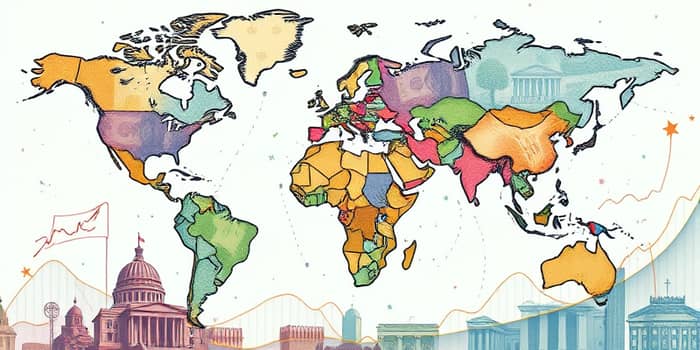
Global liquidity is at a crossroads as central banks worldwide shift from unprecedented easing to cautious tightening. This article unpacks the latest data and offers practical insights to help investors navigate a fragile market landscape.
The aftermath of the pandemic-era stimulus continues to reverberate. In Q1 2025, global liquidity saw a brief uptick of over $5 trillion of expansion. Yet, this momentum has stalled as quantitative tightening gains traction.
Major central bank balance sheets grew by only $700 billion so far in 2025, a fraction of the surges observed during the COVID interventions. Market collateral values and reserve aggregates now point to a gradual ebb rather than a fresh wave of support.
Each central bank is carving its own path, reflecting divergent regional dynamics and inflation outlooks. In the United States, the Federal Reserve nears the end of its QT phase. Bank reserves at 10.9% of GDP sit above the 8–10% target, suggesting a slowdown in balance sheet reduction by year-end.
The Fed’s December 2024 rate cut of 25 bps was a signal that monetary policy has turned less restrictive. Market consensus now anticipates up to 50 bps of easing through 2025, conditional on inflation and labor data.
Meanwhile, the People’s Bank of China pursues a more accommodative stance. Policy rate cuts and reserve requirement reductions support stagnant economic growth, but rock-bottom 1.7% yields on 10-year government bonds reflect subdued inflation expectations.
In Europe, the ECB is set to lower its deposit rate to 2% by mid-2025, and the Bank of England plans four rate cuts over the same period, albeit from more conservative starting points. This divergence underscores a fractured global liquidity picture.
Several forces conspire to slow the tide of central bank easing:
These drivers not only shape official actions but also influence investor sentiment and risk appetite across asset classes.
As global liquidity contracts, risk-sensitive assets come under pressure. Cryptocurrencies and high-yield bonds, which benefitted enormously from excess liquidity, are particularly vulnerable to forthcoming corrections.
At the same time, yields on ultra-short and short-term instruments remain attractive. With the Fed Funds rate at 4.25–4.5% and one- to three-year A3/A- bonds yielding 4.5–5%, investors can optimize cash positioning to cushion against volatility.
Emerging markets risk sharper outflows if global liquidity continues its downward trajectory.
With quantitative tightening approaching the lower bound of “ample” reserves, central banks may pause or even reverse course in late 2025. However, any resurgence in liquidity is unlikely to match the extraordinary peaks of 2020–21.
Market volatility may intensify amid policy uncertainty and uneven economic recoveries. Investors should remain nimble and consider these practical steps:
By combining tactical cash management with vigilant risk monitoring, investors can navigate the ebb and flow of global liquidity more effectively.
Central banks are dialing back pandemic-era support, ushering in a period of “grinding lower” liquidity. Although late-2025 may bring a temporary reprieve, the next cycle peak is likely subdued compared to recent highs.
With inflation pressures lingering and growth prospects mixed, the path ahead demands a balanced approach between yield and risk. Armed with robust data and adaptable strategies, market participants can position themselves for both challenges and opportunities.
References













